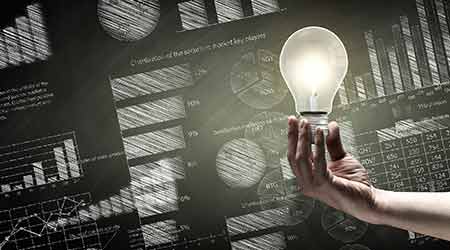How To Get The Most Use Out of Energy Data
From utility bills, meter readings, and data loggers, data comes from a variety places in a variety forms. Here's how to standardize it and make it actionable.
Among the variable costs involved in operating a facility, utilities — in particular energy and water — may be the largest expense. To get a handle on managing that expense, smart facility managers need to know what is used when, and how much it costs. Energy analysis, artificial intelligence, and Internet integration are among the new tools being used by facility managers to do so. In the process, they find “nuggets of insights” that enhance their bottom line. However, none of this innovative analysis can take place without data.
Facility managers have a smorgasbord of options for sources of utility data. Data can be collected from utility bills, meter readings, data loggers, and a facility’s building automation system. While BAS automatically collect data from sensors and data loggers, data from the utility bill and meter data don’t just magically appear in a perfect format. “We’re generating all this data, but there isn’t a facility data engineer that deals with data that the building creates,” says Jim Sinopoli, managing principal at Smart Buildings, LLC. “Some of the data is on paper, some in Excel sheets.”
Data gathering and processing can be a complicated, time consuming, and costly exercise, and may itself become a significant overhead expense. The good news is that — thanks to innovative data service technologies and open data exchange standards — this task is now becoming easier. Here is a look at the various sources of energy and water data, how they may be accessed, and why they are useful.
Using a spreadsheet?
At the most basic level, facility managers track their utility cost and usage from their monthly bills. In the worst case scenario, utility bills arrive in the accounts payable department, and only a few monthly data points are keyed into a spreadsheet. Many organizations employ full-time staff dedicated to manually processing bills, including scanning and manual entry of a few key numbers such as the total amount charged and the due date. The information is only used for bill payment and yearly reporting, and rarely reaches facility managers.
Such manual data processing may easily result in mistakes and poor data quality. To save time, details that are of potential use to someone managing energy and water — e.g., line items for peak kW demand, or meter numbers — are typically not recorded. In relation to how much it costs to process data this way, a facility manager is really not getting the most out of it. It’s worth the time to evaluate options for an automated feed of machine-readable utility bill data that can be integrated with accounting, energy analysis, and other building management software.
Secret to managing bills: Automatic data extraction
Rather than struggling through a stack of bills each month, some firms use a utility data processing company. Their systems automatically download PDF bill images for utility accounts and transcribe and deliver data in a standardized format. Such companies specialize in interpreting bill data and can help translate some of the mysterious items on bills into standardized names for charges digestible by an algorithm.
To make the most of this opportunity, be sure the data processor will deliver customized data exports to the software used for the organization’s property and energy management. Some accounts payable departments outsource the entire bill payment process to bill processing companies that also (for a fee) will make the payments.
Large organizations with many facilities in one territory sometimes have the option of receiving utility bill data from utility companies in electronic data interchange (EDI) format. The disadvantage with this format is that some of the procedures require proprietary software, and there are big differences in data structure and content among utilities. Smaller utilities, like municipal water providers and electric co-ops, usually don’t offer it.
With a “higher definition” and machine-readable version of utility bill data, that includes standard names for charges, it’s possible to focus on only charges for peak demand, stormwater charges, or taxes. A comparison between supply charges from one energy supplier with those offered by a competitor may lead to better rates. By separating out just metered charges that fluctuate with weather changes, weather normalized cost analysis will be more accurate. Unless they are separated out, it’s impossible to identify savings opportunities in smaller charges, like late payment charges, that may affect the bottom line. This process may also be used to highlight and verify exactly how much the grid operator paid to a company for the solar PV power generated by the company’s rooftop system.
Getting more from usage data
Utility bills provide monthly numbers for usage. A lot may be done with those 12 data points. Many facilities benchmark their consumption and compare recent performance to other years, or to similar buildings. Energy Star’s Portfolio Manager web tool is the gold standard for benchmarking. It’s free to use, and many web platforms offered by service providers use Portfolio Manager’s application program interface (API) for automated data exchange. This means that information between property management or bill management software can be updated as often as desired. There’s much less “busy work” because it’s no longer necessary to upload or manually enter the same building and utility information into different programs.
To secure an Energy Star score provided by the Portfolio Manager system, data must be provided for all meters in a building, including tenant spaces and common areas. If tenants pay their own bills, the utility may offer an anonymized, aggregated version of their consumption. An alternative is to model tenant consumption using a sample, usually 10 percent, of known tenant billing data, and extrapolate it to the others.
Related Topics:














